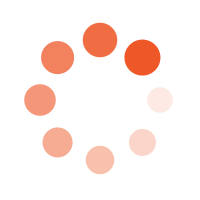Is Developing a New Design the Best Choice for Your Company?
By leveraging DFX methodologies, your company can create innovative, cost-effective, and market-ready products that not only meet but exceed customer expectations.
Companies constantly face the dilemma of whether to develop a new product design or extend the life of an existing one. While extending the life of a current design may seem like the easier and more cost-effective option, there are compelling reasons why creating a new design could be the better strategic choice.
Here’s why your company should consider developing a new product design:

The focus and discipline of DFX is a powerful tool if used as part of a broader strategic approach to developing product/process differentiation, and a sustainable advantage against competition. Involve Design for X in Strategy. Once your team has determined the focus of your strategy, place the focus of design on developing competitive advantage.
At Boston Engineering, DFX is a core part of creating values during our product development process. We focus on several key DFX areas that align with our expertise:
- Design for Manufacturability (DFM)
- Design for Assembly (DFA)
- Design for Cost (DFC)
- Design for Testability (DFT)
- Design for Reliability (DFR)
- Design for Serviceability/Maintainability (DFS)
- Design for Usability (DFU)
- Design for Modularity (DFMo)
Learn more about Design for X (DFX) at Boston engineering: Boston Engineering Design for X

(continued from above)
1. Unmet Market Needs and Innovation Opportunities
- Addressing New Market Demands: The market is dynamic, with consumer preferences and technological advancements changing rapidly. A new product design allows you to meet these evolving needs more effectively than simply updating an existing product. For example, if consumers are demanding more sustainable products, a new design can incorporate eco-friendly materials and processes from the ground up.
- Innovative Features: By starting fresh, you can introduce cutting-edge features and technologies that set your product apart from the competition. Whether it’s integrating smart technology into everyday items or creating more intuitive user interfaces, a new design offers the flexibility to innovate without being constrained by existing frameworks.
2. Leveraging Design for X (DFX) Methodologies
- Cost-Effective Production: Design for Manufacturability (DFM) and Design for Cost (DFC) methodologies ensure that your new product is designed with efficient production and cost savings in mind. These methodologies help you avoid the higher costs associated with retrofitting outdated designs for modern production processes.
- Enhanced Reliability and Usability: Design for Reliability (DFR) and Design for Usability (DFU) focus on creating products that not only last longer but also offer a superior user experience. This can significantly reduce returns and increase customer satisfaction, fostering brand loyalty and long-term success.
- Modularity and Customization: Design for Modularity (DFMo) enables you to create products that are easily customizable, catering to different customer preferences and market segments. This level of personalization can differentiate your brand in a crowded market and lead to higher customer engagement.
3. Reducing Risks Associated with Market and Resource Allocation
- Mitigating Market Risks: By leveraging DFX methodologies, your new design can be tested and optimized for market readiness. Design for Testability (DFT) allows for thorough testing before launch, ensuring that your product meets customer expectations and reduces the risk of market rejection.
- Efficient Resource Allocation: Developing a new design allows you to allocate resources more effectively. Instead of spending on patching up an old design, you can invest in innovation that drives growth. DFX methodologies help streamline this process, ensuring that your resources are used optimally to achieve the best results.
4. Faster Time to Market with Optimized Processes
- Speeding Up Development: While creating a new design might seem time-consuming, DFX methodologies such as Design for Assembly (DFA) and Design for Manufacturability (DFM) can accelerate the development process. These methodologies ensure that your product is designed for quick and efficient production, helping you get to market faster and capitalize on emerging trends.
- Sustained Competitive Advantage: By being first to market with innovative features and a fresh design, your company can establish a strong competitive position. This advantage is often difficult to achieve with an updated version of an older product.
Interested in providing your product development team with DFX skills? Learn More about our Applied DFX process and development workshops.


(continued from above)
5. Long-Term Strategic Value
- Building a Stronger Brand: A new product design that resonates with consumers can significantly enhance your brand image. By consistently introducing innovative and reliable products, your company can build a reputation for excellence, leading to sustained customer loyalty and higher market share.
- Future-Proofing Your Product Line: Developing a new design positions your company to adapt more easily to future changes in technology and consumer behavior. With a forward-looking approach, your product line remains relevant and ready to evolve with the market.
6. Avoiding the Pitfalls of Extending an Existing Design
- Limited Innovation: Extending the life of an existing design can stifle innovation and make it difficult to introduce truly groundbreaking features. A new design, on the other hand, provides a blank canvas for creativity and technological advancement.
- Brand Perception Risks: Continuously updating an old design can lead to a perception that your brand is stagnant or unwilling to innovate. A new design demonstrates that your company is forward-thinking and committed to providing the best possible products to consumers.
- Diminishing Returns: As products age, the cost of maintaining and upgrading them can outweigh the benefits. By investing in a new design, you can avoid the diminishing returns associated with propping up an older product and instead focus on driving growth through innovation.
Conclusion: Making the Strategic Choice
While extending the life of an existing product design can be a viable short-term strategy, the long-term benefits of developing a new design often outweigh the risks. By leveraging DFX methodologies, your company can create innovative, cost-effective, and market-ready products that not only meet but exceed customer expectations. This strategic choice positions your company for sustained success, a stronger brand presence, and a more significant competitive advantage in the marketplace.New eBook Available Now!
"Leveling Up Existing Products through DFX"
-Download Insights from a DFX Subject Matter Expert-
 Developing successful new products from scratch is challenging enough, but what about improving on existing designs?
Developing successful new products from scratch is challenging enough, but what about improving on existing designs?
In this eBook, we’ll dive into the real-world experiences of DFX subject matter expert John DePiano, exploring the common areas where existing product owners excel, as well as the key opportunities where targeted DFX support can drive major improvements.

Understanding the Importance of a DFX approach
Applying Design for X (DFX) methodologies upfront in product development optimizes the entire lifecycle by improving manufacturability, testability, reliability, usability, and other critical characteristics. This avoids costly redesigns later on, facilitates high-quality products that satisfy customers, reduces manufacturing and service costs, and supports flexibility through modularity and platforms. The holistic perspective of DFX drives efficient, cost-effective delivery of successful products that provide competitive advantage. Investing in DFX early pays dividends across the entire product lifespan.
Do you offer training on DFX for engineering teams?
Education is critical to effectively implement DFX principles. We provide training tailored to your engineers’ roles and product lines. This includes overall DFX methodology, deep dives into specific disciplines like design for reliability or manufacturability, and practical application workshops. Our hands-on approach combines real-world examples and case studies with tutorials on leading DFX software tools. The goal is building organizational DFX expertise and establishing repeatable processes that endure beyond individual projects. Investing in DFX knowledge pays dividends across your entire product portfolio.

Ready to Begin your next DFX Project?
 Whether you’ve created a new technology, or have an innovative way to use an existing solution, Boston Engineering will turn your ideas into reality. Our experts and Industry Partners will enhance your current team or manage the entire Product Development Process from Market Analysis to Production. Don't leave complex projects or high visibility product launches to chance. Know you're going to get the results you want by working with industry leaders in design, development, and deployment of innovative products driven by Novel Engineering. Contact Boston Engineering Today to get started.
Whether you’ve created a new technology, or have an innovative way to use an existing solution, Boston Engineering will turn your ideas into reality. Our experts and Industry Partners will enhance your current team or manage the entire Product Development Process from Market Analysis to Production. Don't leave complex projects or high visibility product launches to chance. Know you're going to get the results you want by working with industry leaders in design, development, and deployment of innovative products driven by Novel Engineering. Contact Boston Engineering Today to get started.
No matter the challenge, our team possesses the expertise in the engineering disciplines and technologies you need to bring your vision to life. Impossible Challenge? Try Us.
-1.png?width=2000&height=279&name=MED%20Coffee%20Talk%20Mastering%20Use%20Cases%20%26%20Cybersecurity%20(2)-1.png)
Impossible Challenge? Try Us.
Selecting a partner to help you complete your design project is a valuable option to reduce project duration and save money.
The Boston Engineering product development system encompasses DFX to ensure a smooth product launch and success in the marketplace. Boston Engineering has DFX knowledge and experience to address aspects and values of a product such as manufacturability, test, reliability, safety, serviceability, cost, and compliance with industry standards and government regulations.

Imagine your Impact: Stay up-to date- with the latest insights and trends we're watching. Add your email address below and sign up for a Monthly Summary of our most impactful posts!










.png)
